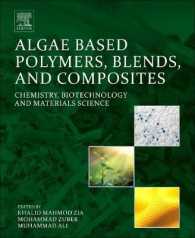Full Description
The countries of the southern and eastern Mediterranean-- Morocco, Tunisia, Egypt, Palestine, Lebanon, Jordan and Syria--have undergone major turmoil in recent years, with civil war, occupation and uprising. Women, Dance and Revolution offers a highly original perspective on the political and cultural tensions through the experiences of contemporary dance practitioners from the region. It shows how these women--all established performers, choreographers and teachers--have responded to the changes brought about by the troubles. Through dance they engage in public protest and performance, endure violence and repression, and reveal new meanings of identity, gender and body politics. Their journeys of dance illuminate how, despite moments of disillusionment, objection and betrayal, being a woman and being a dancer can still mean many things and influence society in many ways in the Arab World.
Contents
CONTENTS
List of illustrations
Chapter 1. Introduction: Meeting dancers, making stories, meaning making
PART ONE: "WHY CAN'T I DANCE IN THE STREETS?"
Chapter 2. Politics and performance entwine: Hala's story
Chapter 3. Surveillance weaving through body, mind and performance: Mey's story
Chapter 4. Occupation, to occupy and to be occupied: Nadia's story
PART TWO: "ARE THESE BORDERS MAKING ME MORE CREATIVE?"
Chapter 5. Breaking boundaries and borders of dance: Noora's story
Chapter 6. Freedom inside and outside dance: Rania's story
Chapter 7. Censorship choreographed, propaganda performed: Dalia El Abd's story
PART THREE: "BEING A FEMALE CONTEMPORARY DANCER... AND BY THE WAY, I'M ARAB, IS
THAT A PROBLEM?"
Chapter 8. The female dancing body in the Arab world: Dalia Naous' story
Chapter 9. Society and the struggles of the dancer: Nadra's story
Chapter 10. Conclusion: Dreaming for the future
Bibliography
Index







